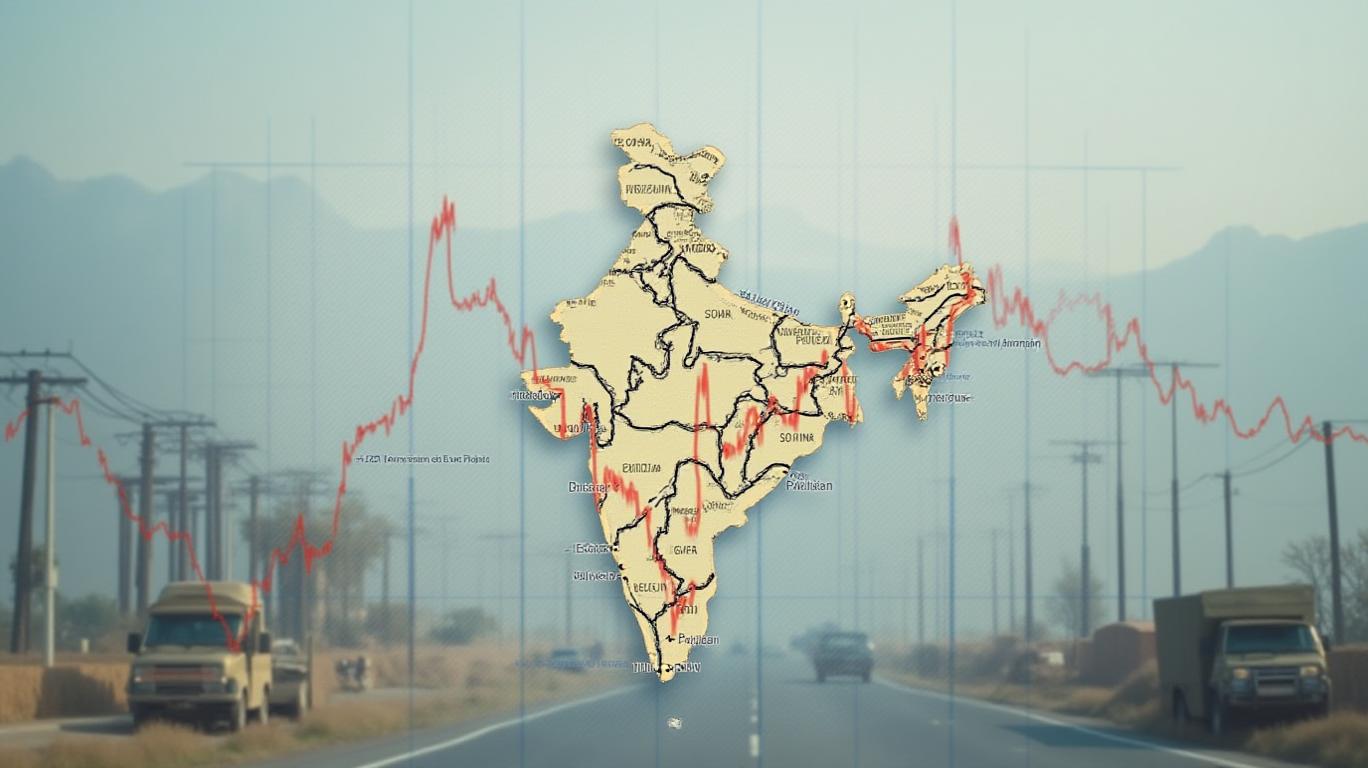Geopolitical Crosswinds and the Indian Rupee’s Resilience: Navigating Tensions for Recovery
The India-Pakistan standoff over Kashmir has reached a boiling point, with missile strikes, cross-border artillery exchanges, and civilian casualties dominating headlines. Yet amid this volatility, the Indian rupee (INR) has shown unexpected resilience. Analysts project a slight appreciation of the USD/INR rate to 84.32 by May 2025, signaling that economic fundamentals may be overpowering geopolitical noise. This article explores how investors can capitalize on this recovery while navigating regional risks.

Geopolitical Tensions: A Catalyst for Volatility, Not Collapse
Recent weeks saw India’s “Operation Sindoor” targeting militant camps in Pakistan, followed by Pakistan’s retaliation with artillery fire. While both sides report civilian casualties and downed aircraft, the geopolitical drama has not yet triggered a full-blown currency crisis. The rupee’s 0.2% monthly appreciation in May 2025, despite heightened tensions, suggests markets are pricing in the likelihood of de-escalation.
Investors are likely betting on a repeat of 2022, when the rupee rebounded after a brief post-conflict dip, as both nations historically avoid full-scale war due to nuclear deterrence. Analysts at HSBC note that while the 85.58 high in May reflects short-term uncertainty, the rupee’s average rate of 84.27 underscores stability.
The Rupee’s Underlying Strength: Beyond Geopolitics
The rupee’s resilience stems from three pillars:
1. Monetary Policy Discipline: The Reserve Bank of India (RBI) has maintained a hawkish stance, hiking rates to 6.5% to combat inflation, which fell to 4.8% in April 2025 from a peak of 7.8% in 2022.
2. Current Account Stability: A narrowing trade deficit (down to $15 billion in Q1 2025) and remittances from the diaspora have bolstered forex reserves to $570 billion, providing a buffer against external shocks.
3. Global Dollar Dynamics: The U.S. Federal Reserve’s pause on rate hikes has reduced pressure on emerging markets. The INR’s 83.06–85.58 range reflects this stability, with the rupee outperforming peers like the Turkish lira and Argentine peso.
Investment Opportunities: Riding the Rupee’s Recovery
For investors, the rupee’s 0.2% monthly gain in May 2025 hints at long-term opportunities:
- Currency Carry Trades: Borrowing in USD at low rates to invest in rupee-denominated bonds (yielding 7.2%) remains attractive.
- Equity Exposure: Sectors like IT and pharma, which account for 60% of India’s exports, benefit from a stable currency.
- Geopolitical Hedging: Investors can pair exposure to India’s Nifty 50 index (up 12% YTD) with puts on Pakistan’s equity markets, though liquidity remains thin.
Risks and Mitigation
While the rupee’s trajectory looks positive, risks persist:
- Escalation to Nuclear Threshold: Though unlikely, a miscalculation could spook markets, pushing USD/INR above 86.
- Inflation Resurgence: Rising food prices (up 3.5% YoY) could force the RBI to hike rates further, crimping growth.
Mitigation Strategy: Diversify into commodity-linked assets (gold, energy stocks) as hedges against extreme volatility.
Conclusion: The Rupee’s Resilience Is No Fluke
The Indian rupee’s 84.32 closing rate in May 2025, despite ongoing India-Pakistan tensions, reflects a market that prioritizes economic fundamentals over geopolitical noise. With inflation under control, fiscal discipline intact, and global dollar trends favorable, the rupee is poised for gradual recovery. Investors who stay disciplined, focus on the USD/INR range of 83–85, and avoid panic selling during flare-ups could capture gains of 2–3% annually in the coming quarters.
As history shows, South Asia’s conflicts often end in stalemates, not catastrophes. For now, the rupee’s story is one of resilience—and a compelling entry point for the brave.
Data Sources: Reserve Bank of India, World Bank, Bloomberg,
Research (May 2025 projections).
Comments
No comments yet